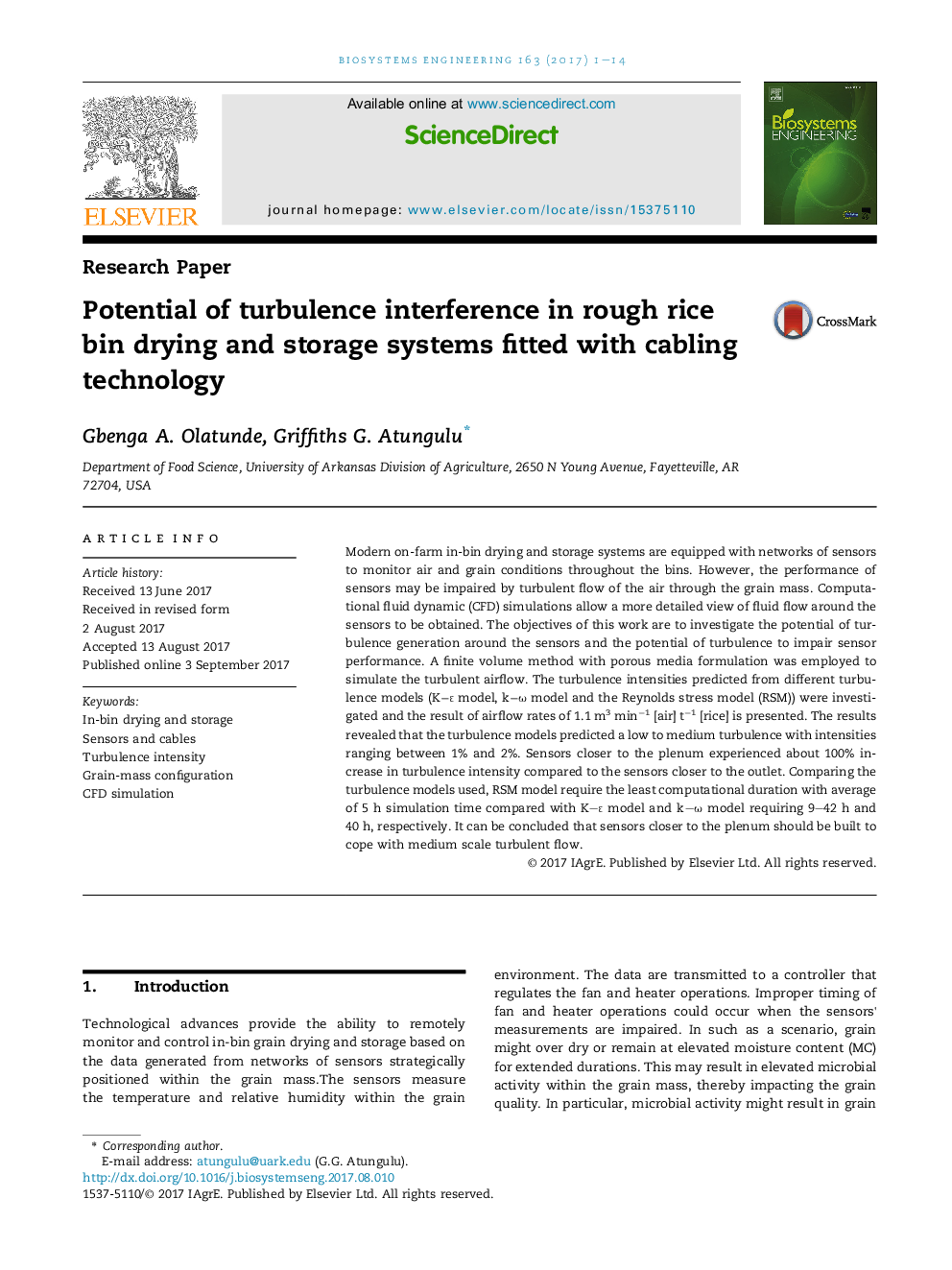| کد مقاله | کد نشریه | سال انتشار | مقاله انگلیسی | نسخه تمام متن |
|---|---|---|---|---|
| 5471827 | 1519498 | 2017 | 14 صفحه PDF | دانلود رایگان |
- Rough rice in-bin drying and storage systems fitted with cabling technology examined.
- Potential interference of turbulence on sensor accuracy investigated using CFD.
- A low to medium turbulence intensities (1%-2%) predicted.
- Sensors closer to the plenum are exposed to higher turbulence intensities.
- Inclination of cable may offer the best option to avoid turbulence interference.
Modern on-farm in-bin drying and storage systems are equipped with networks of sensors to monitor air and grain conditions throughout the bins. However, the performance of sensors may be impaired by turbulent flow of the air through the grain mass. Computational fluid dynamic (CFD) simulations allow a more detailed view of fluid flow around the sensors to be obtained. The objectives of this work are to investigate the potential of turbulence generation around the sensors and the potential of turbulence to impair sensor performance. A finite volume method with porous media formulation was employed to simulate the turbulent airflow. The turbulence intensities predicted from different turbulence models (KâÉ model, kâÏ model and the Reynolds stress model (RSM)) were investigated and the result of airflow rates of 1.1 m3 minâ1 [air] tâ1 [rice] is presented. The results revealed that the turbulence models predicted a low to medium turbulence with intensities ranging between 1% and 2%. Sensors closer to the plenum experienced about 100% increase in turbulence intensity compared to the sensors closer to the outlet. Comparing the turbulence models used, RSM model require the least computational duration with average of 5 h simulation time compared with K-É model and kâ-Ï model requiring 9-42 h and 40 h, respectively. It can be concluded that sensors closer to the plenum should be built to cope with medium scale turbulent flow.
Journal: Biosystems Engineering - Volume 163, November 2017, Pages 1-14
